Main.EllysConductiveStretchyYarn History
Hide minor edits - Show changes to markup
The microscopic closeup images show how the two conductive yarns are twisted around the elastic yarn.
- Ply: 3 (two conductive strands, one elastic strand).
- Ply: 3 (two conductive strands, one elastic strand). Alternately, if you count that each piece of the three strands is already two ply, the ply of this yarn is 6.
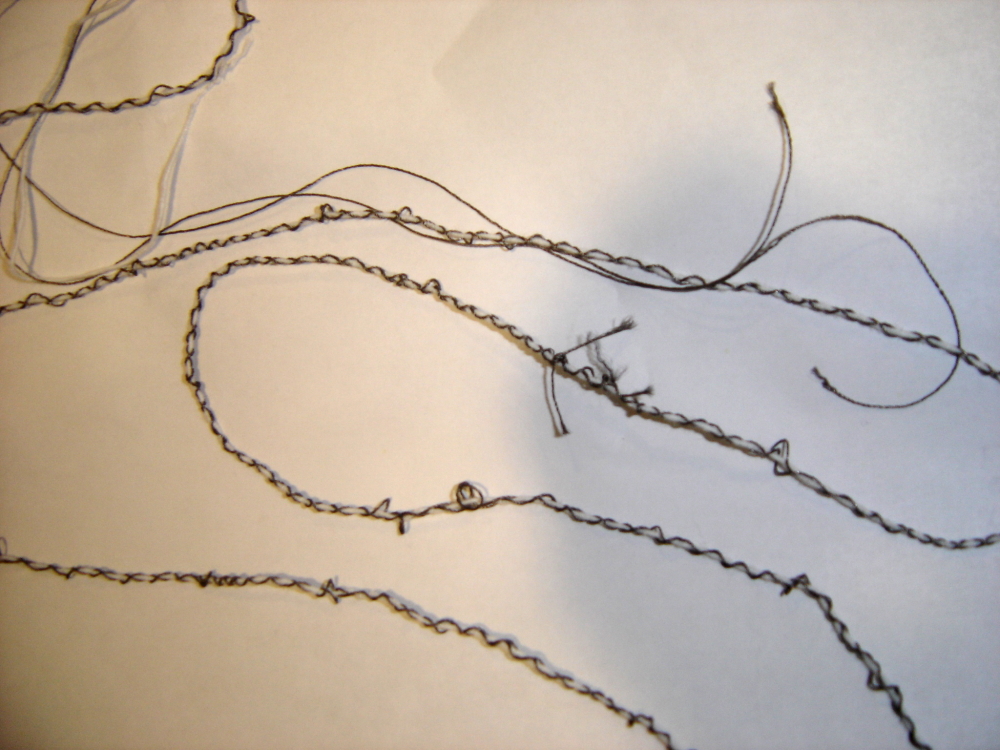
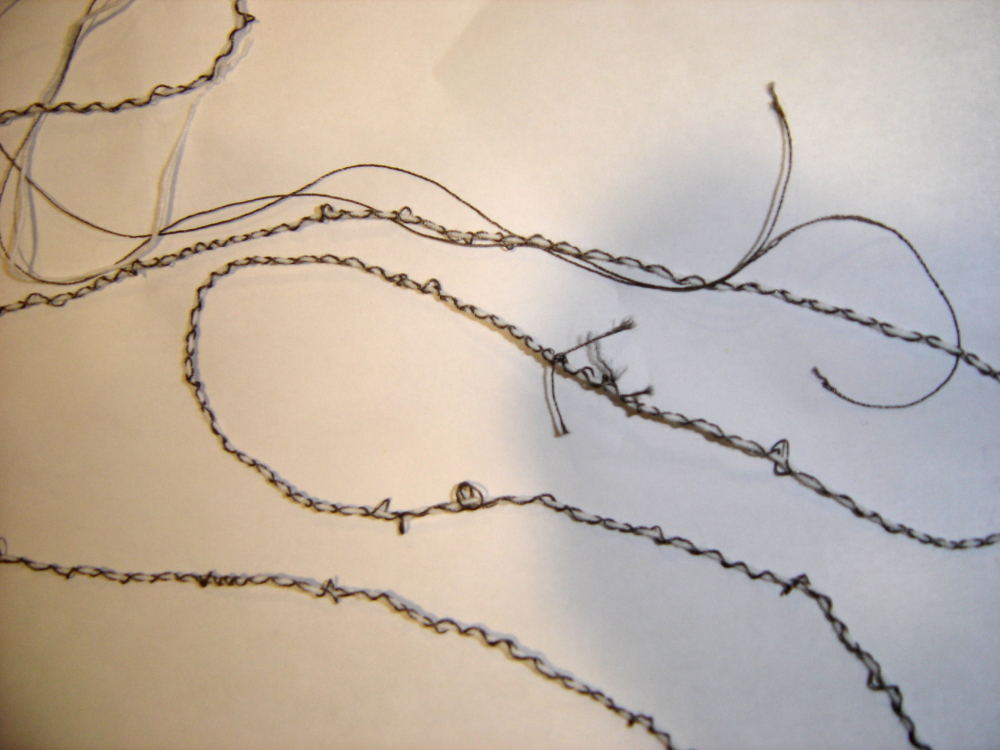




- Conductivity (ohms per centimeter or ohms per inch):
- Conductivity (ohms per centimeter or ohms per inch):2.5 ohms/inch.


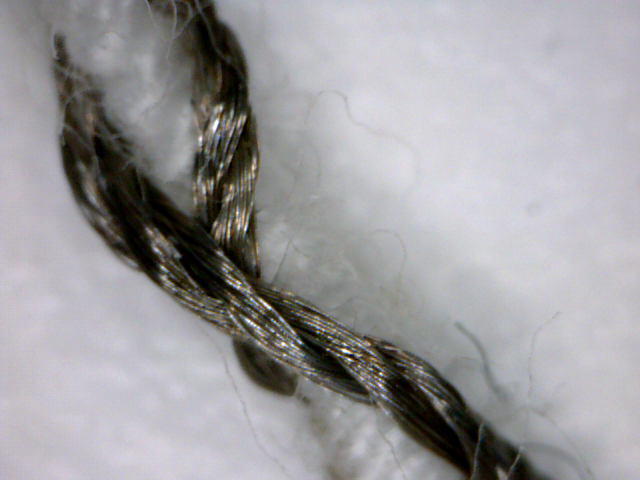
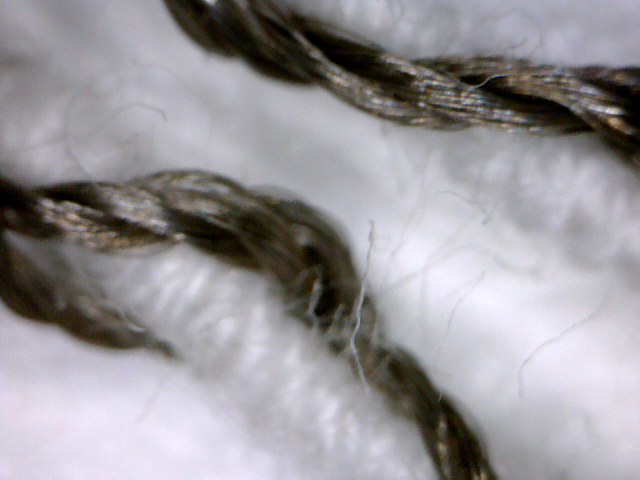
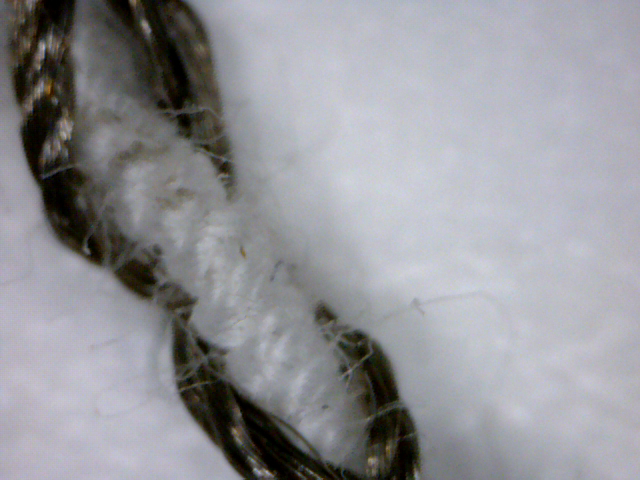
Diameter (micrometers): ~2000 micrometers. Total length of yarn: 1.5 yards unstretched, 1.9 yards stretched. Ply: 3 (two conductive strands, one elastic strand). Twist direction: two-way (one conductive thread counterclockwise around the core, the other clockwise around the core). Twist (turns per inch): 5 turns/inch. Conductivity (ohms per centimeter or ohms per inch):
- Diameter (micrometers): ~2000 micrometers.
- Total length of yarn: 1.5 yards unstretched, 1.9 yards stretched.
- Ply: 3 (two conductive strands, one elastic strand).
- Twist direction: two-way (one conductive thread counterclockwise around the core, the other clockwise around the core).
- Twist (turns per inch): 5 turns/inch.
- Conductivity (ohms per centimeter or ohms per inch):
Conductive Elastic Yarn
For this project, I wanted to experiment with creating a conductive yarn that was stretchable. The conductive yarns that we've worked with so far in class can be knit or crocheted into stretchable pieces, but the yarns themselves do not have much elasticity. This makes them not particularly suitable for incorporating these yarns into projects involving stretch fabrics. I thought that by wrapping non-elastic conductive threads around a non-conductive elastic thread, I might be able to create a yarn with the desired properties of both conductivity and elasticity.
The major exploration with this project was how to wrap the conductive yarns such that there was enough extra conductive yarn built into the final yarn to shift and adjust when the yarn was stretched. I settled on holding the elastic thread taut in the center and alternately crossing the conductive yarns over one another behind the elastic and in front of the elastic. By creating a number of these looped crossings, the total length of each conductive thread that went into an inch of yarn was greater than the length of the conductive thread. This extra length would then be pulled along the yarn when the elastic core was stretched.
Info Diameter (micrometers): ~2000 micrometers. Total length of yarn: 1.5 yards unstretched, 1.9 yards stretched. Ply: 3 (two conductive strands, one elastic strand). Twist direction: two-way (one conductive thread counterclockwise around the core, the other clockwise around the core). Twist (turns per inch): 5 turns/inch. Conductivity (ohms per centimeter or ohms per inch):